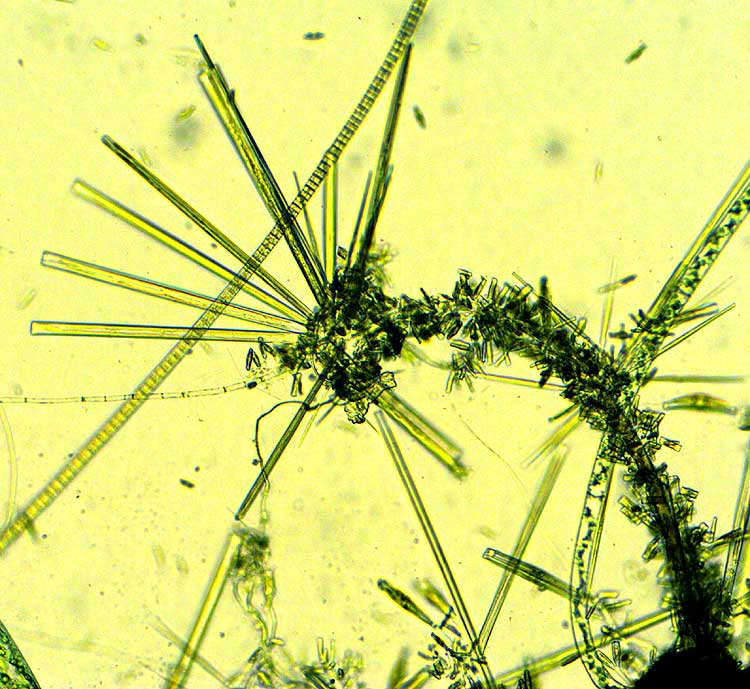Excerpts from Jim Conrad's
Naturalist Newsletter

from the January 20, 2013 Newsletter issued from the valley of the Dry Frio River in northern Uvalde County, southwestern Texas, on the southern border of the Edwards Plateau; elevation ~1750m (~5750 ft); N29.62°, W99.86°; USA
SYNEDRA DIATOMS
Most diatom species in the little Dry Frio River behind the cabin turn up again and again, but regularly spectacular new kinds come to light structured or behaving in ways completely new to me, and mind-boggling to behold. For example, the other day I looked at a rice-grain-size shred of Sycamore leaf that had been decaying in a stagnate pool beside the river and at the tip of a tiny leaf vein extending from the margin of the disintegrating blade I saw what's shown above.
The diatoms are those crystal-like, straight, thin items radiating from the very tip of the vein. The longer, thicker items with crosswalls are filamentous algae and cyanobacteria, so you can see that the crystal-like needles are even thinner than they.
At the Diatoms of the United States website at I found no pictures of diatoms exactly like ours, but after several days of sporadic web browsing finally I found images that more or less matched, though they were not from this part of the world.
The diatoms in our picture appear to be the genus SYNEDRA, a rather obscure and seldom documented diatom, despite being abundant at this time in the Dry Frio's waters. Little information is available about Synedra, except that one description says that "Several cells can be found clumped together at one pole with a pad of mucilage," exactly as in our picture.
We're in a part of the world where species endemism is great and little attention has been given to matters such as local diatoms, so it's not unreasonable to think we could possibly even have a new species, so maybe someday a diatom specialist will be happy to see our picture here.
The Diatoms of the United States website recognizes nine categories of diatoms. Synedra is in the Araphid group, the third diatom type we've encountered in the Dry Frio.
What a delight to find such unexpected gardens so nearby, even here in the heart of winter.